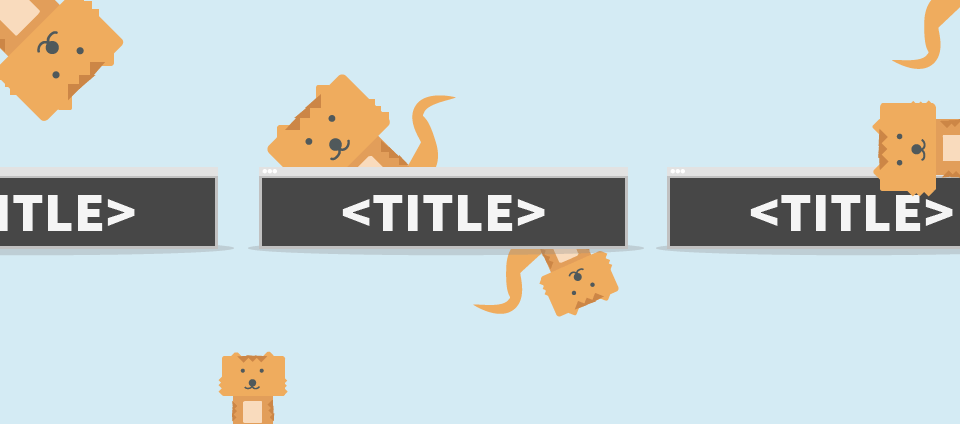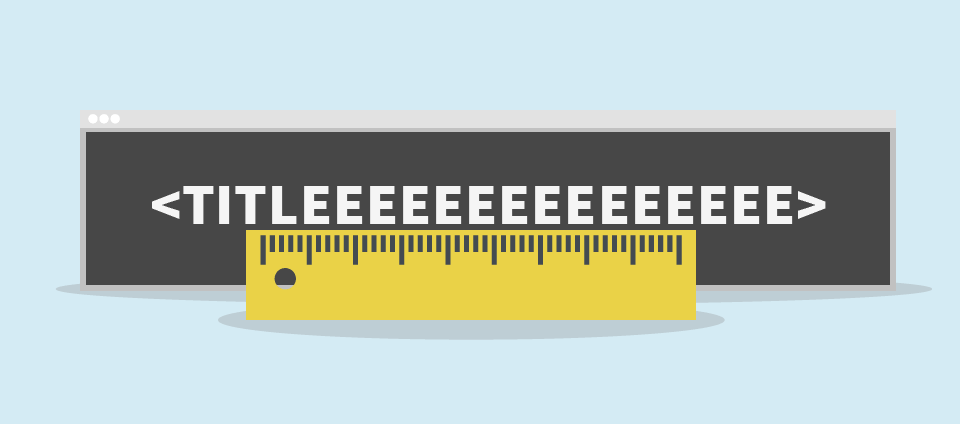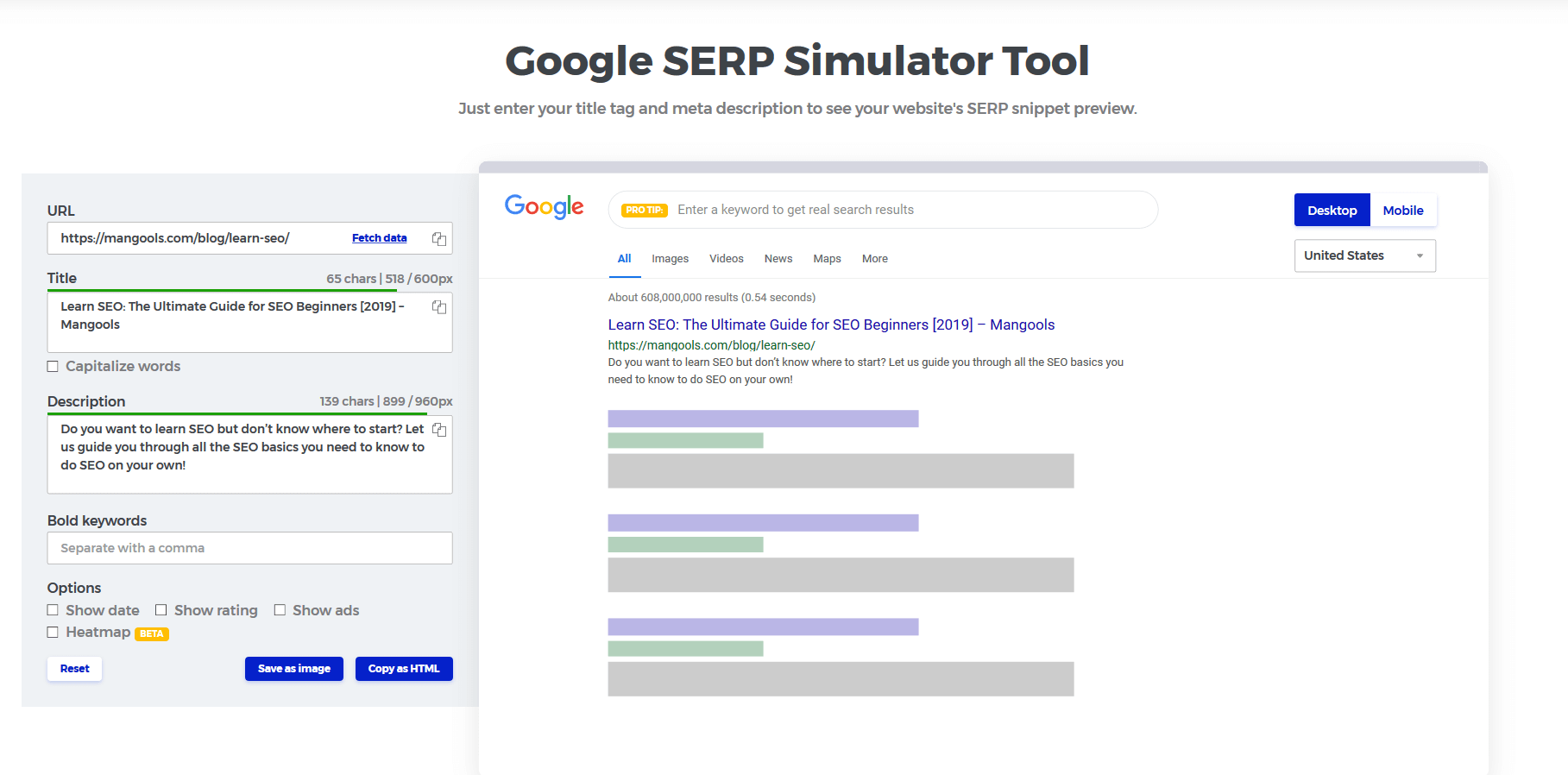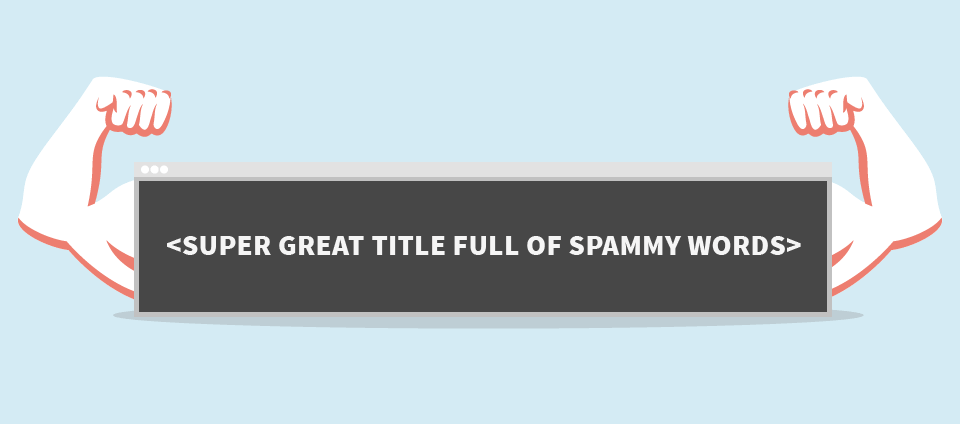Title tags represent the first user’s interaction with your website in Google search results. Their optimization is one of the most important task of on-page SEO, especially when it comes to click-through rate and focus keyword optimization.
From the HTML point of view, title tag is a small piece of code that determines the SERP appearance of a website.
So what can you do to create title tags that are as powerful as possible? What are the most common title tag mistakes you should avoid?
1. You aren’t creating any titles
It’s not only a matter of SEO. It’s a marketing and common sense. You wouldn’t open a local store in your town without putting a name on it, would you?
How to fix?
Whatever goes on, always implement titles. There are many plugins for WordPress sites such as Yoast that will automatically generate them based on the site title. The same applies for CMS, or you can write the title directly in the code.
2. Duplicate title tags
It doesn’t end by creating one generic title you will recycle on all sections of the website. This is a very common mistake, specifically on sites with rich structure.
How to fix?
Every title tag should be unique based on the site content it’s linking to. You can check duplicate titles on your website in Google Webmaster tools. Avoid using titles that are identical to your website or business name.
Do you have many similar sections? It’s good to change the titles at their beginnings.
3. The titles are too long
Long title tags are truncated by Google. They can possibly lose the meaning or call-to-action emphasis. And you don’t want this. Furthermore, no one will read and click on a complicated title.
How to fix?
Use tools such as our SERP Simulator to test whether your title isn’t too long. The exact number of characters keeps changing depending on Google’s updates so it’s a good idea to use these tools. Keep the titles around 60 characters long which about up to 600px.
4. The titles are very short
Google search isn’t an encyclopedia, neither a product catalog. Would you click on something like “65H7 4K UHD”? I guess “Samsung 65H7 4K UHD Smart LED Screen Review” makes more sense.
How to fix?
Don’t overreact when optimizing the length. Include enough information so it clearly indicates what the content is about. Adding a keyword or product name isn’t sufficient.
5. Over-optimized title tags
Always avoid keyword stuffing, repeating, or using synonyms to increase organic traffic. “Smart LED TV, LED Screen, 4K UHD TV” isn’t natural. On top of that, there’s no space for any CTA emphasis and the most important aspect: being original.
How to fix?
Go for one main keyword. Google search algorithm has come a long way and it’s more sophisticated. You’ll rank high even for synonyms and keyword variations if your website is well-optimized and relevant enough.
6. Keyword cannibalization
This problem arises mostly on single-page landing pages. There isn’t enough space for internal linking so SEOs try to pack competitive keywords to the title.
People are mostly searching for “4K LED TV” or “4K PC monitor”, neither “4K LED TV and PC monitors”. Competitive keywords split the ranking potential. It may occur the site won’t rank high for any of the keywords.
How to fix?
The solution is analogical to the previous point. Select the “most important” keyword you optimize for based on the content and include it in the title.
If you don’t want to skip another term (product), you can split the landing page to two and create unique titles. Making subpages linked from the home page improves internal link building.
7. You aren’t optimizing for local search
Do you run a pizza delivery company in New York? Your pizza boy won’t drive to Los Angeles. Local SEO is critical for businesses serving specific locations.
How to fix?
Tell people and search engines where your target audience is located, whether it’s a specific group of people, or community. You increase the chances of appearing in the top results when this kind of search queries are submitted. The relevancy, engagement, and overall UX will improve.
8. Using inappropriate abbreviations
“Digi. marketing tips for effect. strategy” or similarly shortened words are the worst you can do. Abbreviations are effective in many ways but it doesn’t apply for SEO. Search engines may not read these terms correctly. What’s more, it’s hard to read. Writing content for human beings should be your top priority.
How to fix?
Use full-length words: “Digital marketing tips for effective strategy”. However, there are abbreviations I recommend using such as “SEO” standing for “search engine optimization”, “USA” instead of “the United States of America”, or commonly used “RSVP”, “DIY”, “ASAP”, and many others.
They save space and make your titles more visible, which can lead to higher CTR. Creating titles is about psychology as well.
9. There’s no value added
I just mentioned that content is for real users. Search results page is where the UX begins. The title tag isn’t a sales pitch. It’s a piece of information that makes people visit the site. “Buy the latest LED TVs now!” isn’t an example of a wisely prepared title. It’s more like a spammy advertisement.
How to fix?
Titles should be informative with added value so users promptly know what is the site about. A powerful title is an ideal mixture of short information, main keyword, and CTA factor.
Check Google SERP for inspiration. Look for the ones that catch your attention and make you click.
10. Optimized keyword isn’t at the beginning
This is bit questionable. Generally speaking, it’s good to start all optimized features with the keyword you optimize for. But it varies from case to case.
How to fix?
Try to place the keyword at the beginning but not for the price of being grammatically or semantically incorrect.
11. They aren’t tied to content and meta description
Good job, you got to one of the most crucial mistakes of the SEO industry. SEOs often forget about consistency. Moreover, they don’t want to believe how SEO, content, and UX cooperate.
How to fix?
Use the identical keyword, its variation, synonym, or plural of keyword(s) used in the meta description and throughout the website section content. Be homogeneous!
Conclusion
Title tags are certainly important. These are the 3 main benefits of powerful titles
- SEO – Search engine crawlers better understand what is the most important part of content on the website
- UX – Users are provided with clear and meaningful information, which motivates them to click and find what they are actually looking for
- Marketing – Compelling titles with call-to-action and added value lead to higher CTR. Therefore, to more leads and conversions.
On the other hand, you probably know that Google tends to change titles by gathering content from the website, which is more likely to match the search query. If you follow SEO standards, this won’t be a problem.
Keep in mind that having perfect title tags is not the only task to have a well-optimized website. There are many common SEO mistakes you should avoid.













